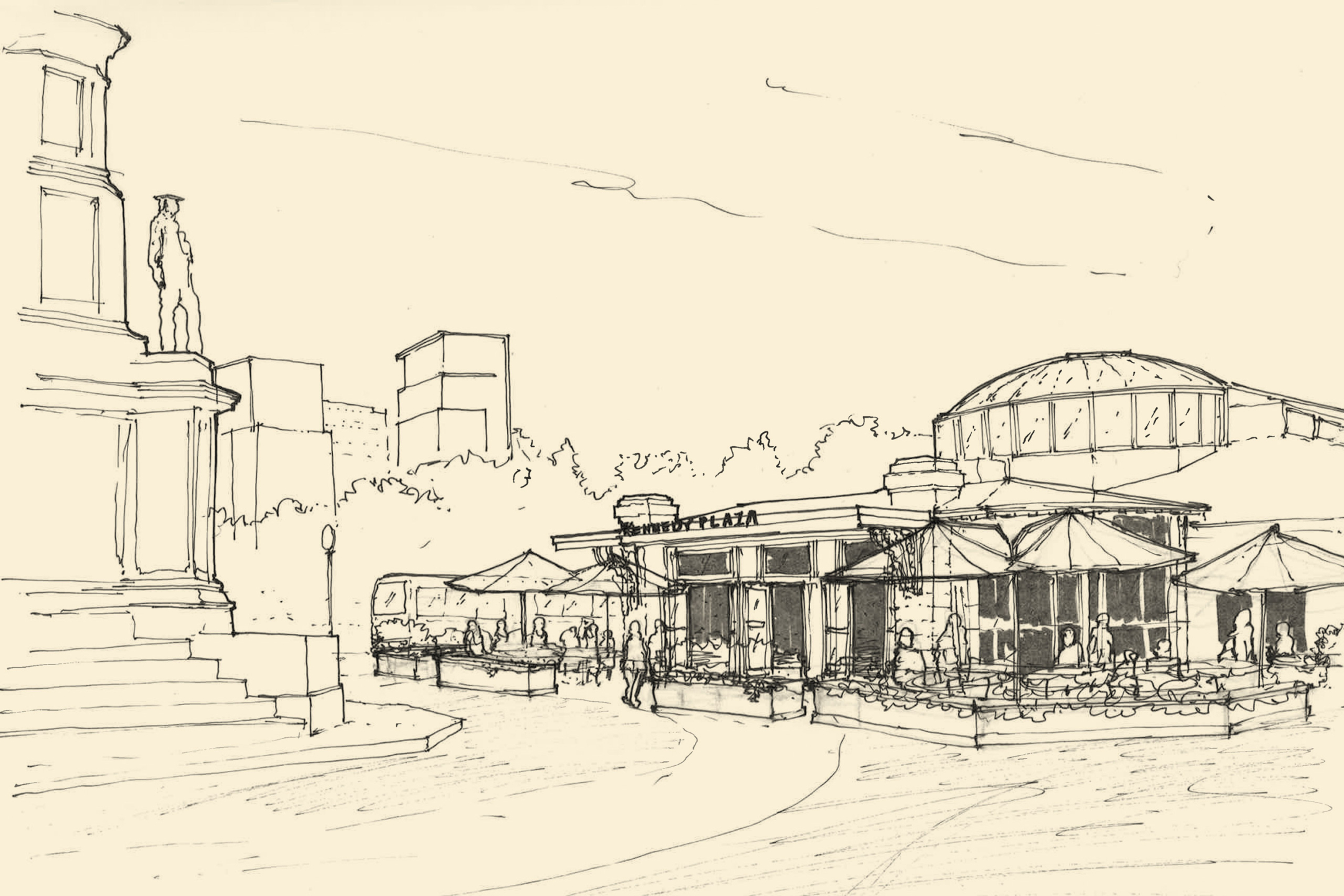by Ben Willis
“What,” “how,” and “when” questions occupy 95% of our professional life as architects. What mechanical system meets our space constraints? When do we need to finish these drawings? Virtual or in-person?
As important as these kind of questions are, their daily piling up can separate us from the “why.” Why have we committed to the work of creating physical places? Why do we do architecture?
There are go-to answers that even a burned-out greeting card writer would find insufficient, much less designers surveying the landscape of human and ecological need that lies ahead. And as architects are arbiters have an impact on so much that affects the public’s daily life, this public should demand our work be buoyed by clear convictions. Perhaps, hurtling toward the end of another year, it’s worth reconnecting with some stronger whys.
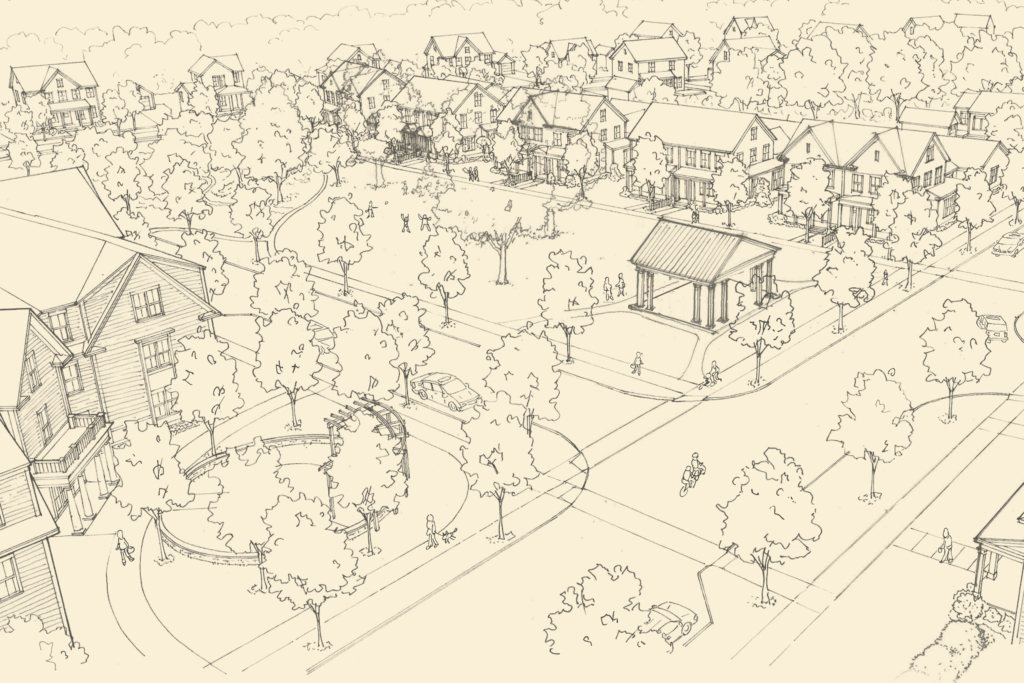
There’s a metaphor that Don Powers, Union’s founder, likes to offer: think of community like a coral reef. It’s a complex, messy, beautiful, living thing, and designers have no power whatsoever to actually design the reef. What we can do is create the sunken ship that provides the armature on which a reef can grow. This is both humbling and clarifying. And sometimes, a shipwreck metaphor is not entirely inaccurate when it comes to communities.
Think of community like a coral reef. It’s a complex, messy, beautiful, living thing, and designers have no power whatsoever to actually design the reef.
Communities are messy for the same reason they are magnificent. They are an assemblage of people with the power to stymie themselves by holding onto expired norms or to forge an optimistic path forward. At a minimum, our role as architects is to create physical space that serves and supports people in the community. Serving people effectively is why we rely on accumulated wisdom from the past and present, spend time researching healthy building materials, and think twice about where we put the mailboxes.
The allure of strong communities compels us to look for ways that space can empower people. The physical backdrop we help to set can do things like encourage people in a building to see more of the sun, neighbors to linger in an unexpected conversation with one another, or residents to resist over-reliance on a personal automobile. Spaces don’t make people active, but they can subtly impede or encourage it.
Empowerment also happens in the process of getting to the final design. It starts when those most affected by a project are consulted early and provided with accessible and trustworthy information to make informed contributions. It continues by consulting best practices, researching unintended consequences, and taking stock of missing perspectives. It rewards humility in the design team and value in long-term community relationships. None of these are simple, but the desire to do well by people is a strong motivator.
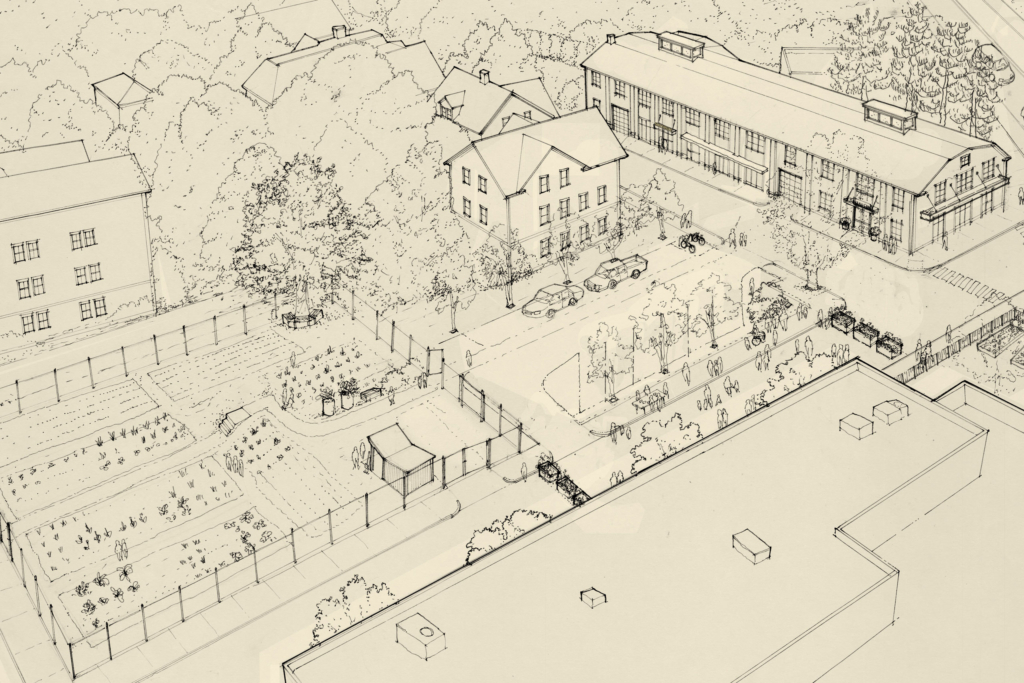
Memory and identity are bound to spaces and objects we can sense – the smell of particular spices, the temperature at certain times of the year, the pavement and plants in our favorite park.
The end result of an architect’s work is foundational to physical artifacts of culture, and therefore unavoidably bound up with the memory and identity of the people who use it. Though our task is to create four walls and a roof that don’t leak, our vocation is to make those four walls and roof add up to places that people feel rooted in, where they feel dignity and a sense of belonging, that provide delight, and that people grow to love. And these places need to be durable and flexible enough that they can be loved and serve the people long into the future.
That sure reads like a load of vague, puffed-up verbiage. And it is, in a way. It’s not as though the facades we design are going to cause or prevent an identity crisis in a passerby. But reminding our technically-oriented field that project outcomes impact memory and connection reminds us of the civic duty inherent in our work. It reminds us that our physical infrastructure decisions have cultural and social impacts.
Social infrastructure refers to those institutions and places that allow people to connect in consistent ways. They are the places where casual (or formal) conversations develop into friendships: public libraries, food halls, elementary school lobbies. Residents of communities with strong social infrastructure are better off for these connections, which build a sense of belonging to a place. Design decisions about the physical environment should include evaluation of the social implications, however subtle that may be.
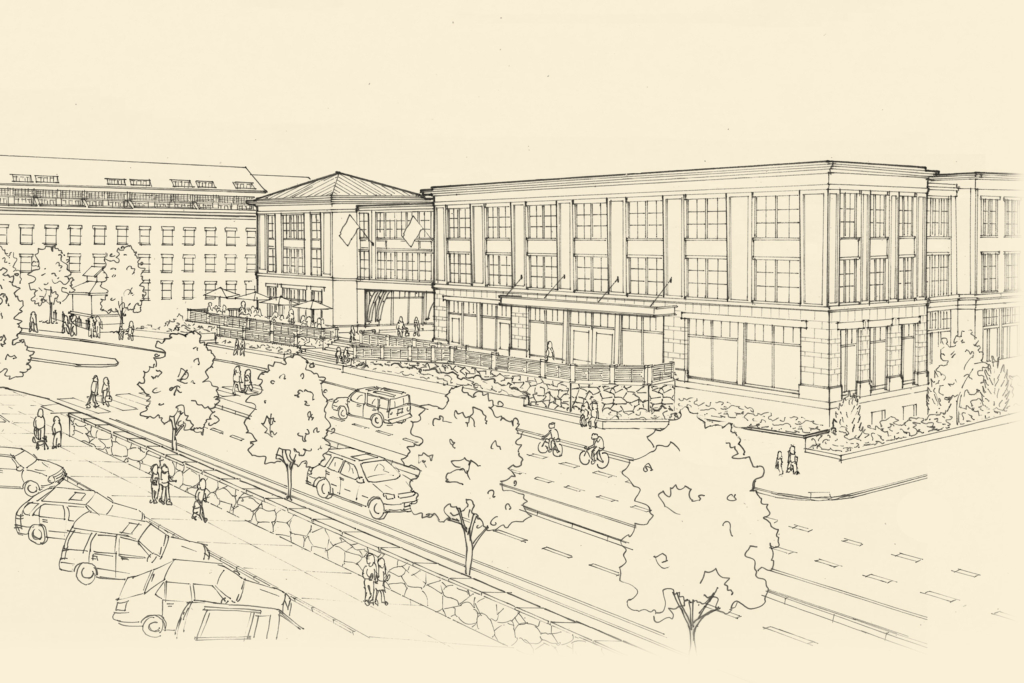
Returning to the reef metaphor: reefs are an excellent example of the importance of balanced ecosystems. Bleaching events in the Great Barrier Reef illustrate the catastrophic effects when that balance tips. While our work tries to center the people it serves, we are also more and more aware of the cost of human needs to our larger ecosystem.
Why do we look for guidance from the philosophy and science of standards like Passive House and Living Building Challenge? Why do we give “crappy” existing buildings a second, third, or fourth look? Why are we haunted by the question of what carbon impact our decisions have? Because there can’t be future human communities if we are obliterated by the disastrous effects of status-quo and uncreative decisions about our resource use. Cultivating goals that are bigger than any single project – like how the places we design could actually restore parts of their ecosystems – keeps our understanding of end users as broad as the effects of our work demand.
We consider the highest and best work of architects and community designers to be an act of stewardship. Stewardship is the careful and responsible management of something that has been entrusted into your care. The land and buildings and spaces we work on don’t really belong to any of us when you consider a long-enough timeline or the unyielding forces of the natural world.
The stewardship mindset can help reject (some) short-sighted decisions by including longer-range outcomes, and not just gut feelings, into the design process. Our access to data about building outcomes – carbon cost, waste produced, energy and water use, resident comfort and health, to name a few – continues to grow. This data is only powerful because it’s a means to get to better ends. Our spreadsheets describe numbers that affect future generations of people (and plants). Knowing that we are entrusted with their care inspires us to make buildings with better test numbers.
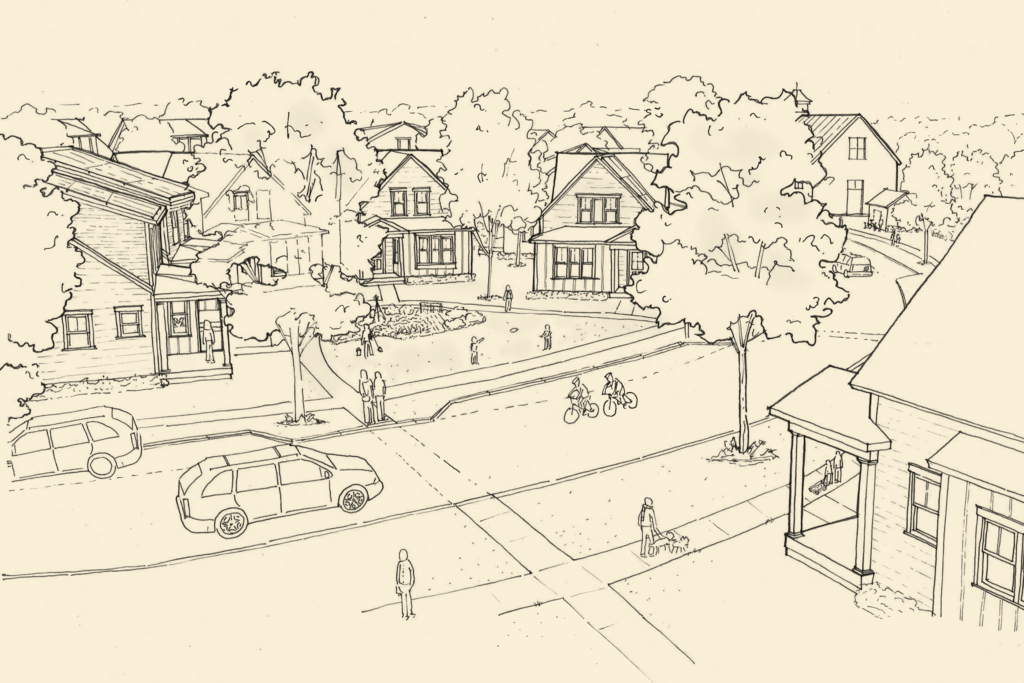
There is another essay to be written about outcome versus intent, especially in design. Clarifying the reasons why we do what we do won’t guarantee better buildings, but intentions can direct how we prioritize our time and resources and serve as guideposts in setting the trajectories of better future trends. The “whys” of our work are the strongest undercurrents supporting the ideas we hope more designers will adopt and advocate for:
- Challenge development to empower residents – new and existing – to be better informed and more engaged in building a culture of resiliency and equity
- Create more active public and green space that encourages flexibility and serves multiple functions for people and the local environment
- Increase the density of housing across many neighborhood types, encouraging new paradigms of comfort in smaller dwellings that are better connected to distributed commercial and public space
- Develop clever strategies for resourceful retrofits of existing buildings and materials.
- Build with a mind to future flexibility through durable construction and zoning codes that allow for new and retrofit uses 50 to 100 years from now
- Make time to investigate, and then improve, how the built environment affects outcomes in public health, justice, and prosperity, for all
- Design physical places to be regenerative: structures that not only reduce all the carbon possible but balance their hyper-local ecosystem and make use of innovation steeped in the past and the present
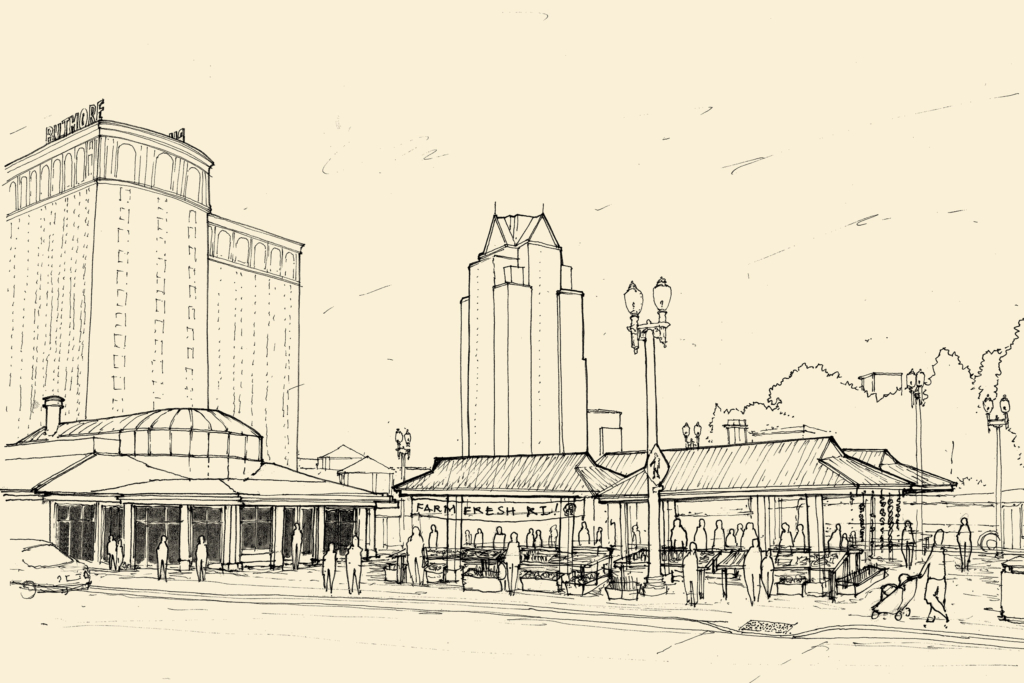
If you’re thinking, “uh, those are the hot-take future trends?” your disappointment may be accurate. These are trends as in “general directions of change,” not fads. (If you’re here for a fad prediction: cool gray has had its moment, and warm gray is the ingenue of the next six months. Call me on it.)
Long-term stewardship isn’t flashy in the way that our current news cycle is conditioning us to expect. If the list above sounds like things you’ve heard before, it’s because repetition is the way they become a steady drumbeat that changes the rhythm of the field. Project deadlines may demand quick steps, but worthwhile progress in the built-environment is a chorus that takes time to build.
The future is an especially opaque place to make predictions about right now. As our “whats” and “hows” and “whens” continue to be in flux, we can find steadiness in our “whys” if we keep them centered on people and ecosystems. Even during seasons that are especially gray, rainy, and cold (literally or metaphorically), carefully planting seeds of what we want to harvest is the best way forward.
This essay was originally written in the late spring of 2020 and has been adapted.

